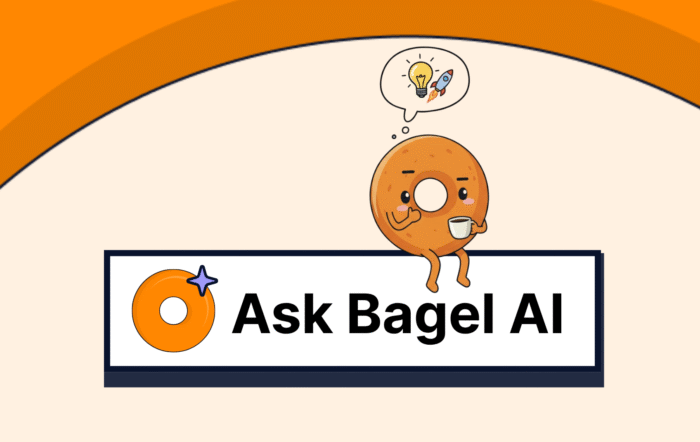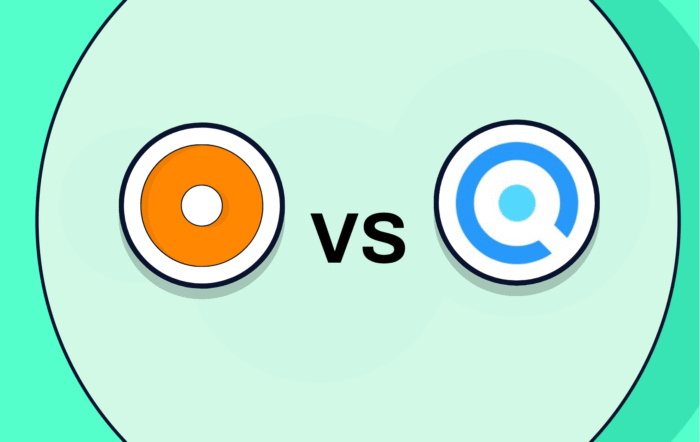Automation Is Speed But Not Strategy
Product managers and product operations leaders are facing a double bind. On one hand, feedback is pouring in from every direction Gong calls, Zendesk tickets, Slack threads, Salesforce notes. On the other, your roadmap is under constant scrutiny from executives asking about ROI, ARR impact, and customer outcomes.
The result? Endless manual handoffs, duplicate tagging, disconnected updates, and spreadsheets trying to hold it all together. This work is necessary, but it’s slow, repetitive, and distracts from strategic priorities.
Enter AI-powered automation. Tools like Zapier, Make, and n8n can dramatically reduce this operational drag, giving teams back hours each week. But here’s the truth:
Automation moves data. It doesn’t decide what matters.
At a certain scale, speed alone isn’t enough. You need intelligence to connect product work to business outcomes. This is where Bagel AI comes in.
What AI Automation Means for Product Teams
AI automation combines logic-based workflows with generative AI to remove manual intervention from repetitive tasks. For product managers and product ops, this often means:
- Routing and tagging feedback from multiple platforms
- Auto-generating release notes from changelogs
- Summarizing customer calls from Gong or Chorus
- Syncing work across Jira, Slack, Salesforce, and Zendesk
- Triage and prioritization of backlog items with AI keyword extraction
Platforms like Zapier, Make, and n8n are built to connect tools and run these processes with minimal manual effort. More recently, each has begun integrating AI natively from Zapier’s natural language “AI Actions” to n8n’s LangChain nodes.
The Key Players in AI-Powered Automation
1. Zapier: The Quick Start for Non-Technical Teams
Best for: Fast setup, large integration library, low technical barrier.
Zapier offers over 8,000 integrations and an intuitive builder that allows PMs to create multi-step workflows without code.
Strengths:
- AI Actions for building workflows from plain tex
- Rich template library for common PM use cases
- Enterprise-grade security (SOC 2, SSO, audit logs)
Limitations:
- Pricing increases steeply at scale
- Complex, branching workflows become harder to manage
- No deep native analytics for performance tracking
- Example Product Ops Stack with Zapier:
Zendesk tickets tagged “billing” are instantly summarized with AI, sent to Jira as a bug report, and posted in Slack so the finance PM can jump in without delay. - Idea to Try:
Imagine your GTM teams getting real-time clarity on what just shipped. Every time a Jira ticket is moved to “Done,” Zapier could use AI to generate a one-sentence, human-readable update with no technical jargon and post it into a shared Slack channel. Suddenly, everyone from sales to support knows what’s live without having to read a change log.
2. Make (formerly Integromat): The Visual Logic Powerhouse
Best for: Mid-to-large teams that need complex logic without custom code.
Make’s scenario builder allows highly detailed, branching workflows with visual debugging tools.
Strengths:
- Conditional paths for nuanced routing
- Integrated error handling and retries
- Better scalability than Zapier for mid-volume usage
Limitations:
- Limited governance for large, regulated orgs
- Operations quotas can throttle frequent, high-volume processes
- Example Product Ops Stack with Make:
When a feature flag is enabled in LaunchDarkly, Make posts a release note to Confluence, creates a Salesforce task for CSMs with an AI-written customer email draft, and updates ChurnZero playbooks with the new feature value. - Idea to Try:
Picture a daily “customer request digest” landing in your product team’s Slack. Make could watch for new notes in Gong tagged “Feature Request,” summarize them with AI, and bundle them into a morning post grouped by theme. Instead of scattered anecdotes, your PMs start every day with a clear picture of what customers are asking for most.
3. n8n: The Open-Source, Self-Hosted Option
Best for: Teams with engineering support and strict data sovereignty needs.
n8n is open-source and fully self-hostable, making it a strong choice for Australian, EU, or enterprise teams with GDPR or local data hosting requirements.
Strengths:
- Full control over data and hosting location
- Deep customization with JavaScript functions
- Horizontal scaling for high-volume automations
Limitations:
- Steeper learning curve
- Requires dev resources for setup and maintenance
- Example Product Ops Stack with n8n:
When the analytics pipeline sends a webhook, n8n runs a sentiment analysis on user reviews, pushes high-priority items to Jira, and logs everything to a secure database for compliance tracking. - Idea to Try:
Think about how quickly you could respond if a VIP customer hit a blocker. With n8n, you could detect Zendesk tickets tagged “VIP,” pull their ARR from your CRM, and send an enriched alert to your CSM team. Instead of a generic ticket notification, they’d see: “This is a $420K ARR account with a payment integration issue” and jump on it instantly.
Best Practices for Automation That Actually Delivers ROI
Automation is only valuable if it solves the right problems in the right way. Here is how to build workflows that create measurable, lasting impact instead of fragile quick fixes.
1. Start with High-Volume, Low-Risk Workflows
The problem: Many teams start by automating complex, high-stakes processes and end up with broken workflows that are hard to debug.
The better way: Begin with tasks that happen often but carry minimal risk if they fail. These quick wins prove value and build confidence without interrupting critical operations.
Example: Tag all Zendesk tickets mentioning “billing” and route them to a finance queue. If it fails, you still have manual coverage, but when it works, you save hours every week.
2. Monitor Performance Like a Product Release
The problem: Automations are built and then forgotten. Over time, failed runs, throttled operations, or outdated triggers silently create blind spots.
The better way: Track performance the same way you monitor a feature release. Review success rates, error logs, and output quality on a set schedule.
Example: In Make, set alerts for failed runs. If the Jira-to-Slack release update workflow breaks, you find out immediately instead of weeks later when GTM teams start asking why they are out of the loop.
3. Version Your Workflows Like Code
The problem: Teams make changes directly to live workflows without keeping backups. When something breaks, there is no easy way to roll back.
The better way: Keep a version history with clear notes on what was changed and why. Test in a staging environment before pushing live.
Example: You add ARR data to your n8n “Customer Churn Alert” workflow. Save the previous version so you can revert if the new API slows processing.
4. Keep a Human in the Loop for High-Stakes Actions
The problem: Full automation of sensitive processes can cause costly mistakes, especially in customer-facing or revenue-critical situations.
The better way: Add review or approval steps before final actions are taken. Let automation do the heavy lifting, but keep a decision-maker for nuance.
Example: Bagel AI identifies a product gap tied to $500K ARR. Instead of auto-adding it to the roadmap, have a PM review the insight alongside business context before committing resources.
5. Document, Share, and Train for Reuse
The problem: When automations live in one person’s head, they disappear when that person leaves or changes roles.
The better way: Treat workflows as shared assets. Document triggers, logic, outputs, and ownership so anyone can maintain or improve them.
Example: Store a “Zapier Release Update Workflow” page in Confluence with screenshots, trigger logic, and example outputs. If the workflow owner is unavailable, another team member can manage it without starting from zero.
The Ceiling of Automation
Automation speeds things up but without context, speed is hollow.
Problem: Speed Without Strategic Insight
- Automation can funnel feedback into systems, but it can’t flag the one issue that could unlock a $500K opportunity.
- Workflows may tag backlog items, yet they won’t isolate which ones are driving churn.
- Dashboards display activity but they don’t tie actions to business outcomes.
Better Way: Pair Fast with Insight
Success depends on being strategic, not just efficient. Automations should surface decisions backed by context and ROI.
What the Data Says
- 80 percent of product features are rarely or never used. That’s efficiency lost in executing features that don’t move the needle.
- 89 percent of GTM teams report direct revenue impacts from misalignment. When teams aren’t aligned, opportunities disappear.
- Plus, strategic misalignment issues can cost companies up to 25 percent of their revenue in some cases.
Tiny Contrast That Moves the Needle
| Traditional Automation | Smarter Automation + Insight |
| Moves feedback blindly | Highlights feedback tied to revenue or churn |
| Tags backlog items generically | Prioritizes based on customer value or ARR impact |
| Surfaces raw activity data | Connects outputs to business KPIs and decisions |
Bagel AI The Intelligence Layer Above Automation
Bagel AI is the first AI-native product intelligence platform built to connect product work directly to business outcomes.
What Bagel Does That Automation Doesn’t:
- Auto-clusters feedback from Salesforce, Gong, Jira, and Zendesk
- Links feature gaps directly to ARR impact, churn risk, and expansion potential
- Surfaces themes prioritized by business value
- Pushes targeted updates directly into GTM tools no extra dashboards
Key Differentiators:
- Customer-specific AI model trained on your company’s data
- Embedded inside existing GTM tools – no new UI for teams to learn
- Context-aware business logic– not just keyword matching
When to Shift A Decision Framework
5 Signs You’ve Outgrown Generic Automation:
- You can’t quantify the revenue impact of customer requests.
- Feedback is scattered across 5+ tools and never prioritized.
- Sales deals are stalling over missing features you didn’t know were critical.
- Post-launch adoption is lower than expected, and root causes aren’t clear.
- Execs are asking for ROI metrics your current stack can’t produce.
Quick Reference: Automation vs. Bagel AI
| Scenario | Automation Tools | Bagel AI |
| Routing feedback to Jira | ✓ | ✓ |
| Auto-generating release notes | ✓ | ✓ |
| Quantifying ARR impact | ✗ | ✓ |
| Surfacing deal-blocking gaps | ✗ | ✓ |
| Prioritizing by churn risk | ✗ | ✓ |
| Linking Gong calls to roadmap themes | ✗ | ✓ |
| Reporting post-launch value | ✗ | ✓ |
Read more in this article: Build or Buy AI Product Intelligence Platform: How to Make the Right Call
Automate to Move Fast, Adopt Bagel to Drive Strategy
Zapier, Make, and n8n give you the muscle to move data quickly. Bagel AI gives you the brain to decide what to do with it.
When your team’s success depends on choosing the right work, not just doing work faster, Bagel AI becomes the natural next step.
If you’re still spending more time routing insights than acting on them, it’s time to go beyond automation and into product intelligence.



